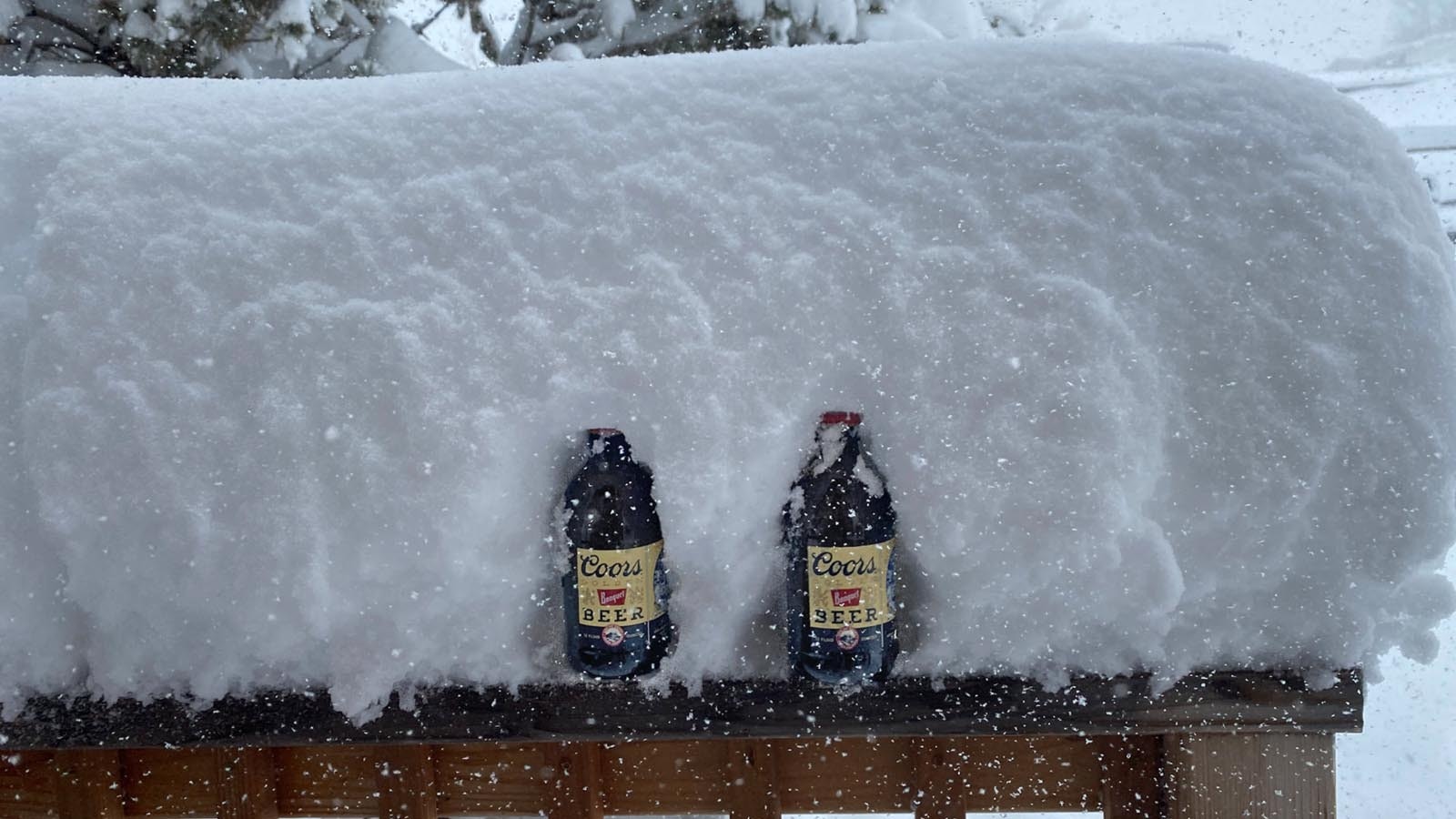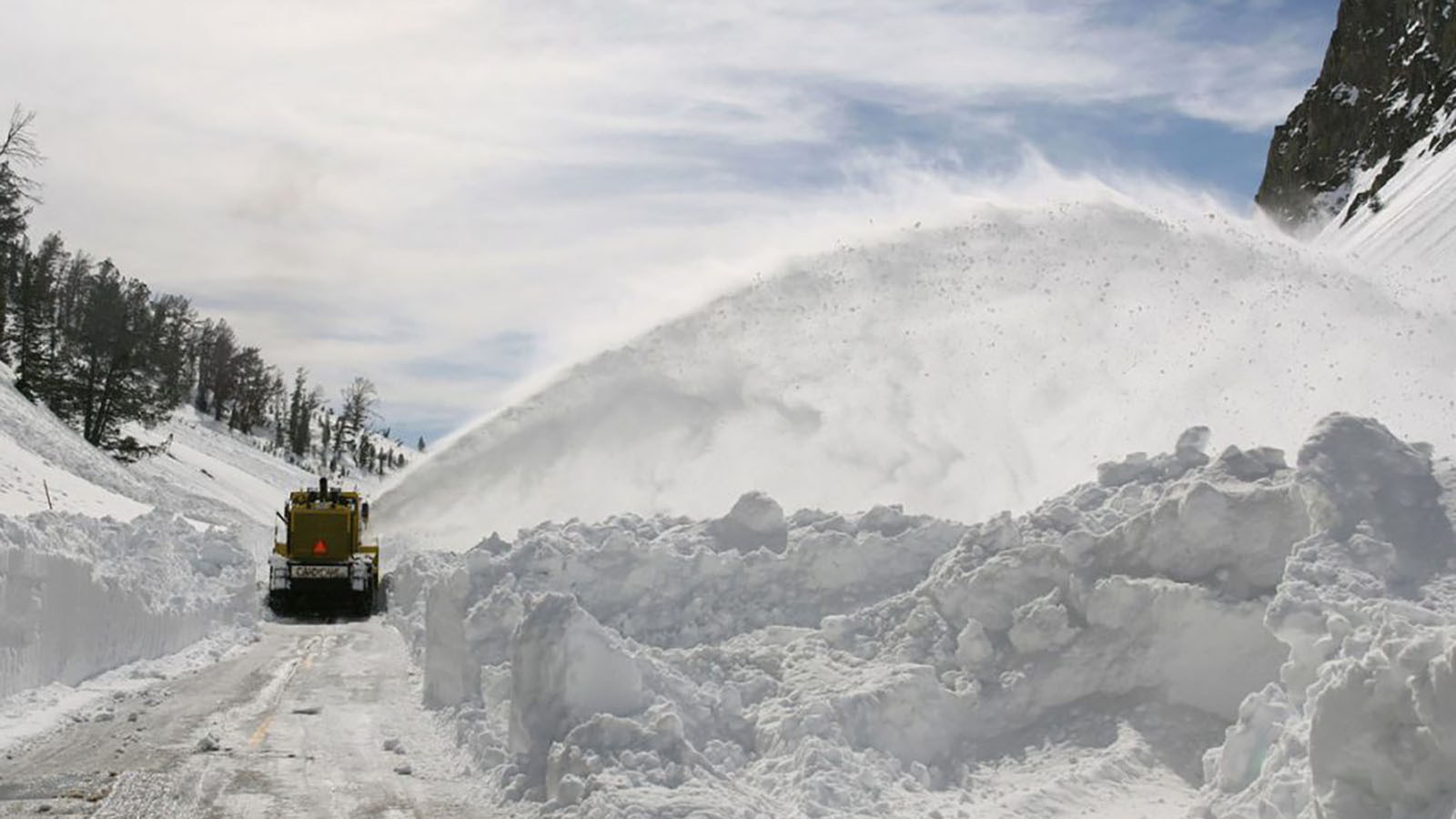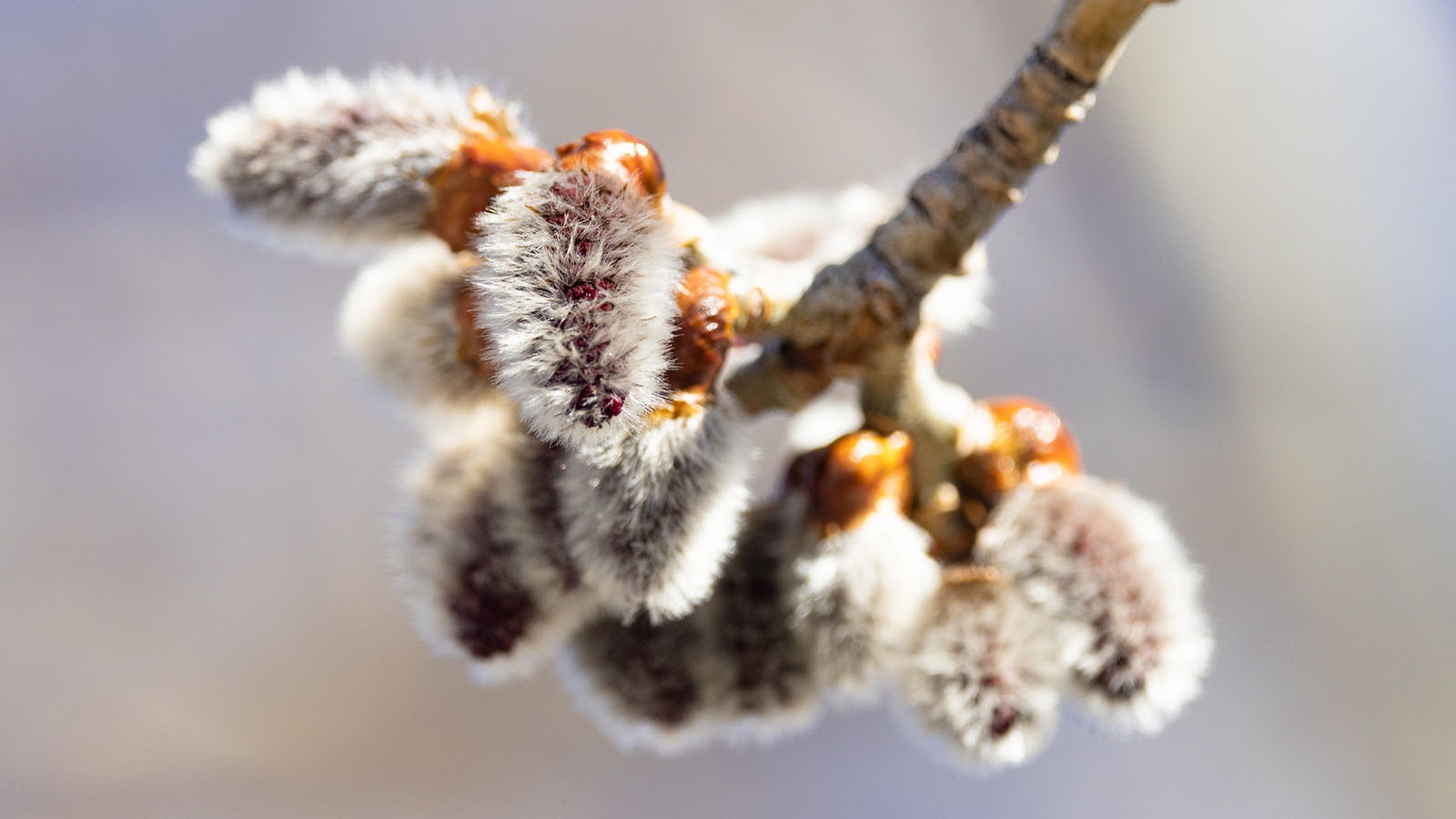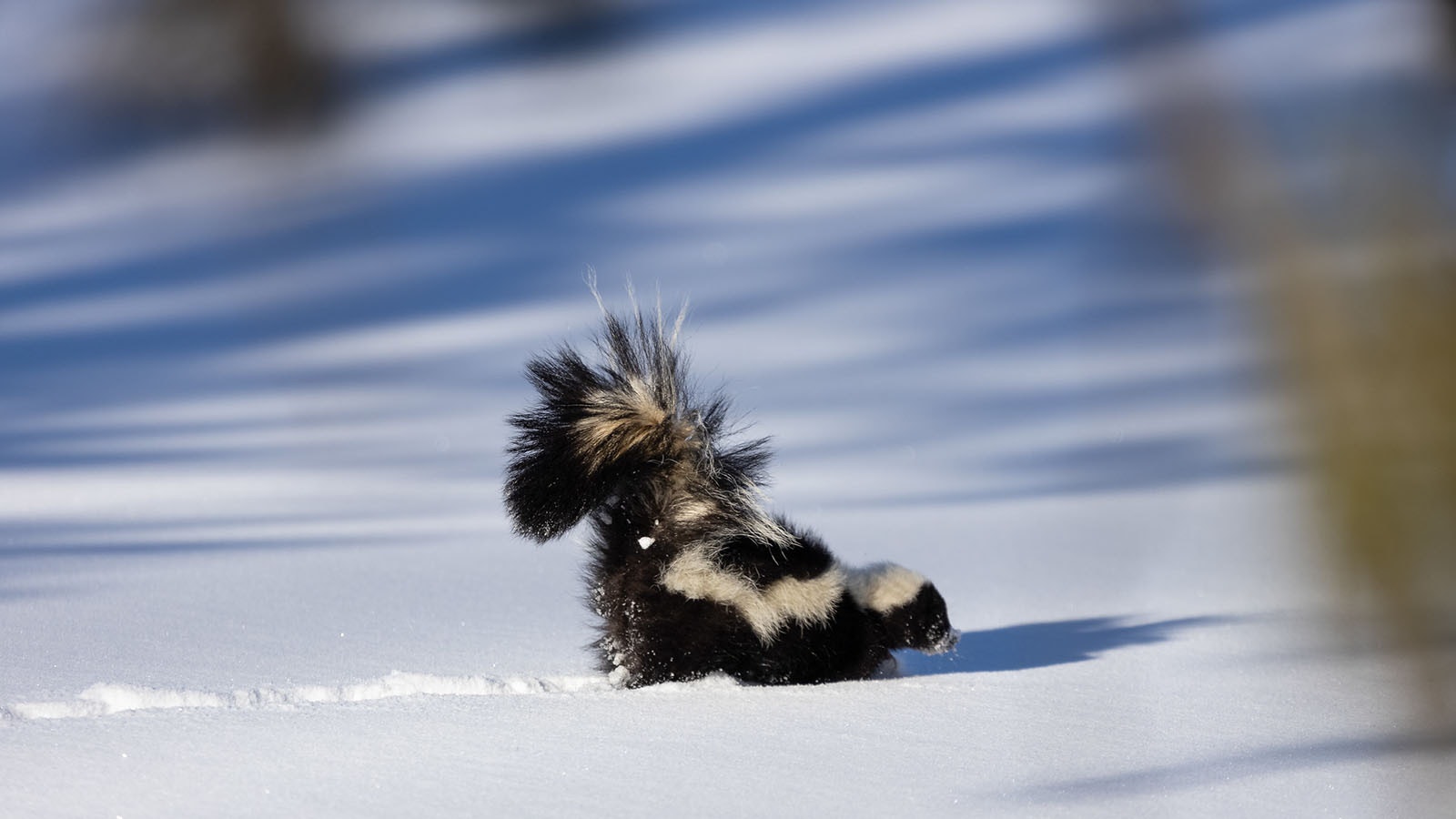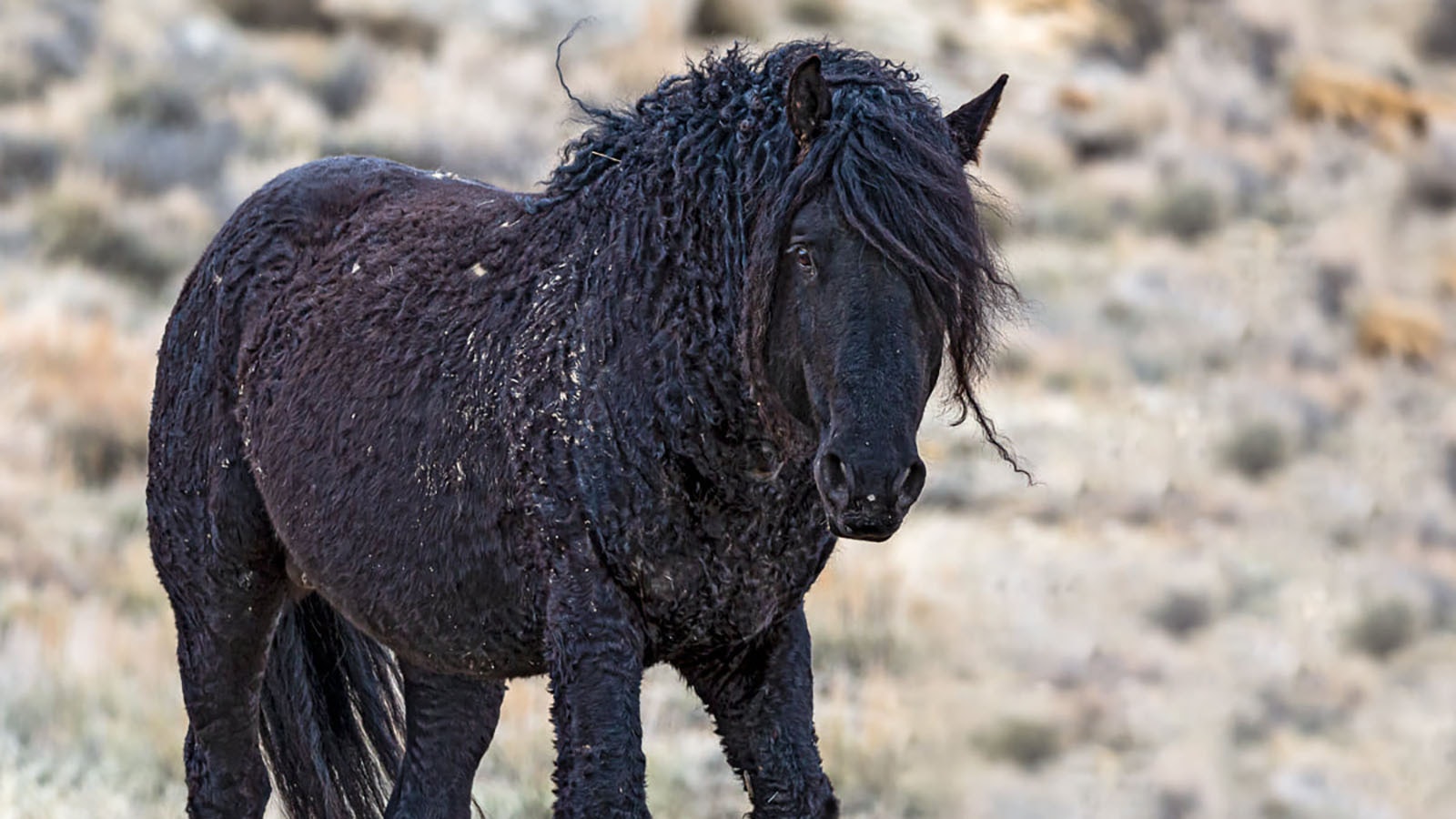The official first day of spring for the Northern Hemisphere came and went this week with things looking decidedly spring-like around much of Wyoming.
During the equinox, the earth’s axis and orbit align so that both hemispheres get an equal amount of sunlight. This happens each March sometime around the 19th, 20th or 21st.
But celestial affairs have little bearing on Wyoming. This is a state that does things its own way, and when it is good and ready.
And Old Man Winter is an irritable tenant, behind in the rent and difficult to dislodge.
That's why Cowboy State Daily meteorologist Don Day maintains that the first official day of spring on the calendar is really Wyoming's Groundhog Day, because it typically means people can expect six more weeks of winter-like weather.
What Is Spring And Where Can You Find It?
For starters, spring is not easily defined in Wyoming as a date on a calendar. It can be subjective, selective and elusive. Spring arrives in varying degrees and most certainly in diverse places.
Spring-like conditions can be experienced as early as St. Patrick’s Day, April Fool’s Day or Easter, but it depends on where. Early April flyfishing on the North Platte River in shirtsleeves is possible on the same day people are skiing in Jackson Hole. In fact, Wyoming is one of the few states that can have a grassfire concurrent with a blizzard just 250 miles away.
Wyoming is a big state. Its 97,813 square miles makes it the 10th largest in the U.S. Ranging from a low elevation of 3,100 feet above sea level in the northeast along the Belle Fourche River where it crosses into South Dakota, to the 13,810-foot Gannett Peak in the Wind River Range, there’s a whole lot of ground to cover in the 307 area code.
Hence why spring is selective.
On March 19, the first official day of spring, was pushing 70 degrees in Basin. Time to get your arugula in the ground. A week later in Jackson, daytime highs will struggle to get much into the 30s with a couple inches of snow expected for five straight days.
Spring in Wyoming is also highly subjective. After a long winter of mufflers and mukluks, almost anything above freezing feels warm. A sunny, 42-degree day in March has locals stripped down to T-shirts while Florida visitors’ teeth are still chattering the morning of the Dubois Fourth of July Parade.
Any time it is not actively snowing and blowing could be considered springtime in the Rockies.
Finally, Punxsutawney Phil can go ahead and take Feb. 2 off. Wyomingites know they’re in for another six weeks of winter, if not twice that. That’s not to say there won't be some days that tease the coming of a seasonal change, but the old Wyoming adage (borrowed without permission by other states) is:
Fool’s Spring, Second Winter, Spring of Deception, Third Winter, Mud Season, Winter’s Revenge, Actual Spring … maybe.
Or as Cowboy State Daily columnist Bill Sniffin once put it, Wyoming’s four seasons are Almost Winter, Winter, Still Winter and Construction.
Winging In Spring
How do you know when it really is spring in Wyoming?
One surefire way is to observe nature. Flora and fauna know best, and our feathered friends are rarely misguided.
“Spring has sprung when the meadowlark has sung,” is one rule.
The Western meadowlark is one of many migratory birds that begin to make their way back to Wyoming each spring from warmer climates.
Many mark their own “official” spring start by the distinctive song of the meadowlark. Mountain bluebirds are also a go-to indicator spring’s arrival is imminent. Some have already been spotted across the state.
The robin, though, clinches it.
While a few hardy robins are able to overwinter in harsh conditions, this species’ return is still a key harbinger of spring for many people.
Canada geese usually get a jumpstart on their arrival to Wyoming for spring. Similar to autumn, squadrons of honking “V” formations overhead let everyone know change is in the air.
“Flocks of sandhill cranes entertain us with their distinctive clacking calls as they return from warm southern states,” says river guide Eric Barker with Barker-Ewing Scenic Tours.
Listen closely for the unmistakable guttural calls of sandhill cranes as early as April in Grand Teton and Yellowstone national parks.
Birds of prey like osprey begin showing up in the Cowboy State around the first half of April.
Osprey are one of those birds that have a keen sense of nest site fidelity. They often return year after year to the same nest — after all, it took some time to build. Some osprey nests can weigh up to 300 pounds.
Teton Science School’s (TSS) Kevin Taylor has been studying wildlife for years and teaches students to do the same. TSS’ Kelly-based campus is perfectly situated for nature studies.
“[In March] Canada geese begin reclaiming their nest territories or developing new ones. Geese get a head start on osprey for nest platform choices, as osprey won’t arrive in this valley until early April,” Taylor said.
More and more, osprey return to the old homestead only to find a goose has squatted their claim. The resulting battles between defensively aggressive geese and rankled osprey can be good sport in spring.
Other raptors like bald eagles, hawks and great-horned owls are early nesters and will begin incubating eggs as early as late February.
“Of the approximately 300 bird species that can be found here in summer, only about 30 of them commonly spend the winter,” Taylor said.
The chirps, calls and songs of these spring-summer birds — even as snow might still blanket the ground — is the symphony of spring. A soundtrack you might not have even noticed you’ve missed over the long winter.

Where The Wild Things Are
Pet owners know firsthand when about spring’s impending arrival. You could practically build another dog or horse from the coat those animals shed as temperatures begin to rise.
Deer, elk and other ungulates start to surf the “green wave” of vegetation northward on their annual trek back to summer grounds and higher elevation. Bull elk head higher, pregnant cows seek lower elevation to prepare for birthing.
“These pronghorn and mule deer make their way into Grand Teton National Park from scrub deserts south of Jackson, along ancient routes that represent the longest seasonal migrations in the lower 48,” Barker says.
Look closely, deer and elk will have antlers covered in velvet all spring. It won't be until later in summer they rub that off to prepare for the fall rut.
Soon there will be red dogs running around in Yellowstone. The first bison calves of the year are born in April, with moose and elk to follow in May.
Speaking of calving, ranchers in the more temperate zones of Wyoming begin calving as early as February. Calving in late winter was adopted to increase revenue by marketing a heavier calf at fall weaning.
But this practice can sometimes backfire. A bad spring and depressed cattle prices can combine to make this a money loser. Some ranchers have begun to delay calving to better synchronize nutritional requirements with nutrient availability of grazed forage.
But newborn slicks on the range are a sure sign of spring.
Bears are emerging from their dens after a long hibernation. Male grizzlies are first out in March, followed by sows. Those females with cubs especially like to sleep though much of April depending on weather conditions.
Other hibernators like prairie dogs are soon zooming back and forth across the high prairie.
Weasels and hares change from their winter white to brown.
A lot of Wyomingites swear by skunks. When the stinky polecat is seen out and about, spring is officially underway.
Frogs are a later sign of spring.
“Frogs will look through ice, twice,” goes the old saying, meaning there will be two more frosts after frogs are first heard croaking in spring.
Buzzing insects, beginning with midges and flies, are another indicator spring is getting close. Butterflies, bees and mosquitoes will be on the way soon enough.
Other Signs Of Spring
A clear sign spring has pushed winter out of the way can be found in the state’s abundant foliage. Dormant for months, trees bud beginning with willows. Well before willows sprout leaves, they take on a yellow tone that signifies spring is in the air.
At lower elevation, in riparian communities, cottonwood trees send out new buds in April. Before long, the female cottonwoods will be shedding so abundantly in June, the cotton fluff turns lawns white.
Aspen leaf out in May, as do lodgepole pine.
Closer to the ground, some of the early wildflowers to watch for are hooded and spiny phlox. Steer’s head and sage buttercup are also up as soon as the snow is off.
March and April are such dicey months, though, for those in Wyoming. The lawnmower sits side-by-side with the snowblower in the front of the bully barn — both at the ready.
Car heater on full blast bringing the kids to school, AC running picking them up.
Each day, the sun makes a slower trek horizon to horizon, taking a higher angle. Daylength increases between 2 to 3 minutes per day this time of year. It doesn’t sound like a lot, but it adds up. By the end of April, we’ll enjoy about 40 extra minutes of daylight.
Ice comes off mountain lakes in April and early May. On Jackson Lake in Grand Teton, the ice breaking up and melting off happens quickly when it does. Wind helps break up the ice cover and push it ashore.
The ritual event triggers the annual Ice Off Derby that draws dozens to put their boats in for the first time of the year.
April Showers Bring May Plowers
Officials in Yellowstone National Park pick a date every year to end over-the-snow travel and shut down the park as it prepares for the seasonal turnover. Plowing of the roads in Yellowstone is another sure sign spring is right around the corner.
Weather permitting, select park roads and entrances will open to the public this year April 19.
Soon, the sound and fury of the Lower Falls of the Yellowstone River will be at its height. Late spring is when peak snowmelt runoff dumps 63,500 gallons of water over the falls per second.
Going somewhere?
Construction cones and potholes are an ever-present sight in spring. Road crews need consistent temperatures in the 60s before they can efficiently and permanently patch damage done to roads by frost heaves. So, pothole season tends to drag on a bit in many parts of the state.
And watch for that first rainbow.
Rainbows in winter are very rare. They are actually referred to as “snowbows.” The reason is a rainbow is usually made by sunlight shining through water droplets in the air. In winter, it is simply too dry and any moisture in the atmosphere is mainly in the form of ice crystals.
And, finally, here are a couple of common sayings to remember as we move boldly into spring:
- If it thunders on All Fool’s Day, it brings good crops of corn and hay.
- A cold and moist April fills the cellar and fattens the cow.
- If it rains on Easter, it will rain for seven more Sundays.
Jake Nichols can be reached at: Jake@CowboyStateDaily.com
Jake Nichols can be reached at jake@cowboystatedaily.com.

